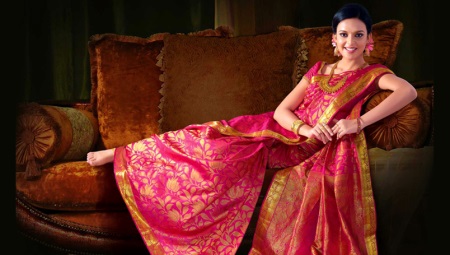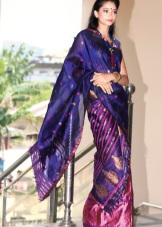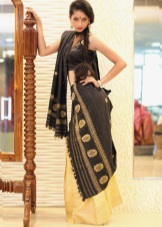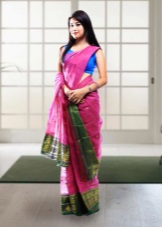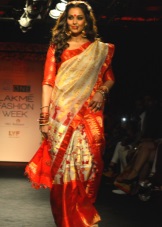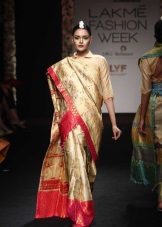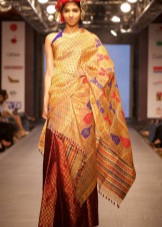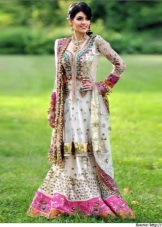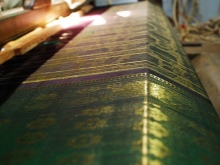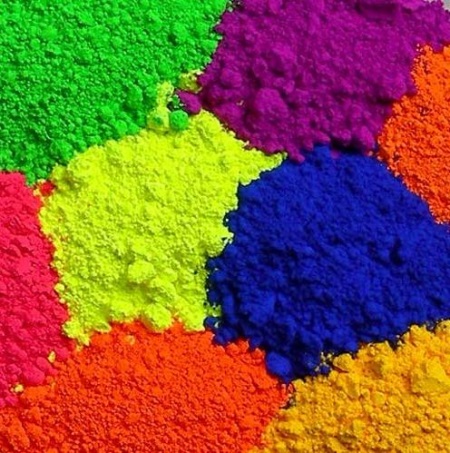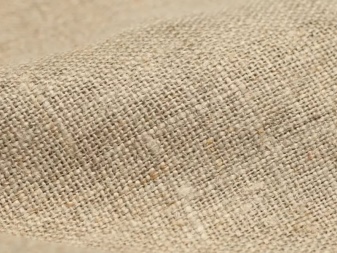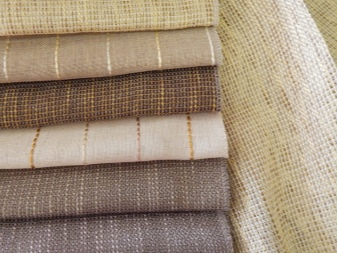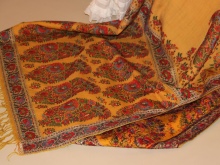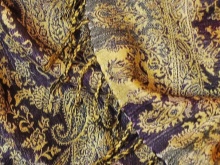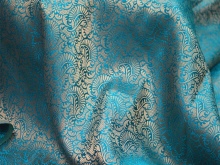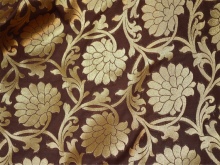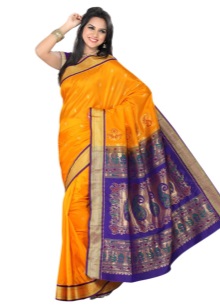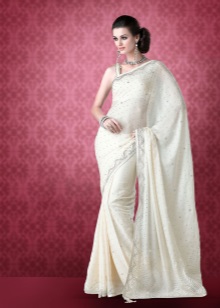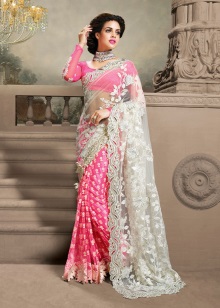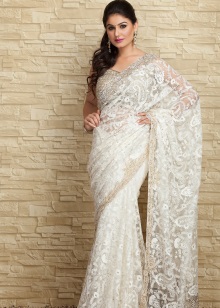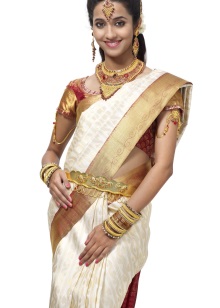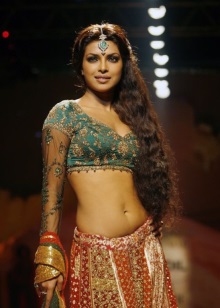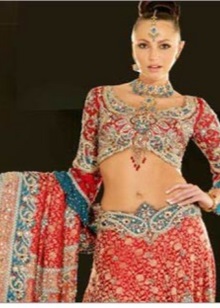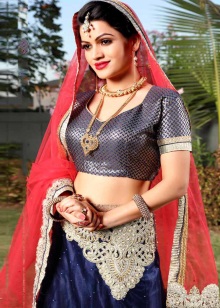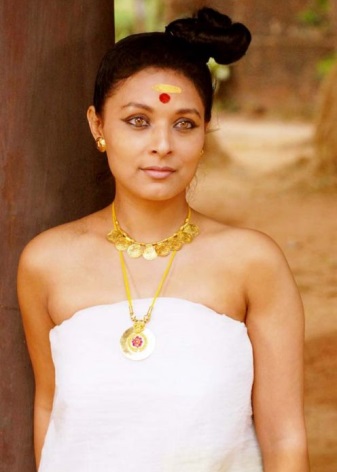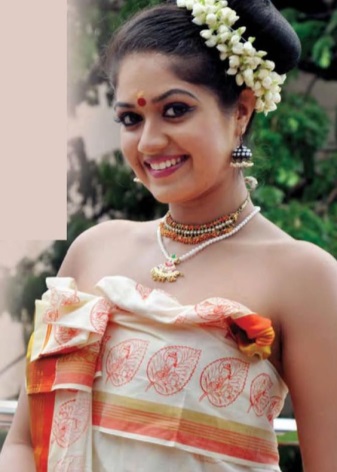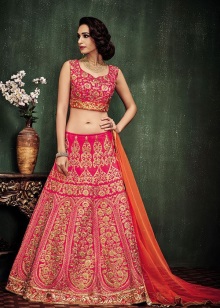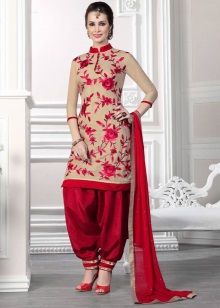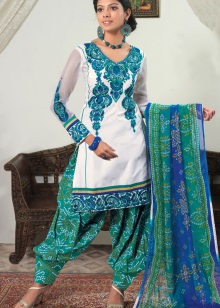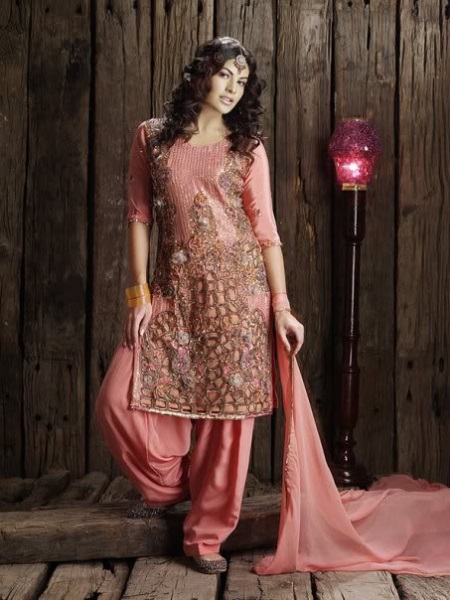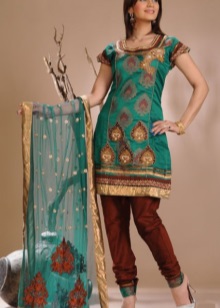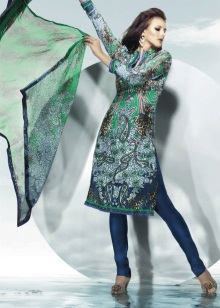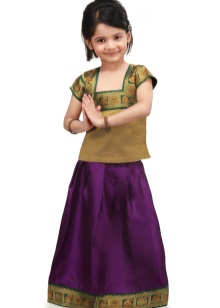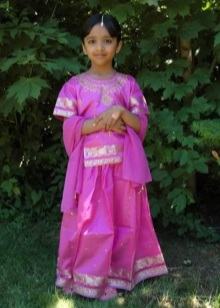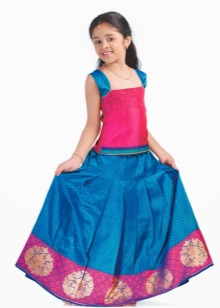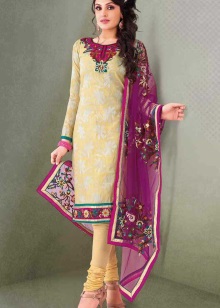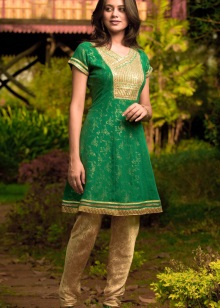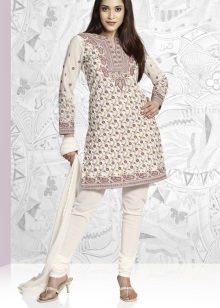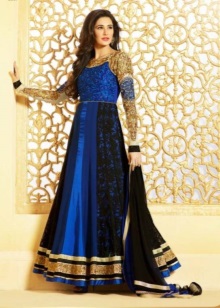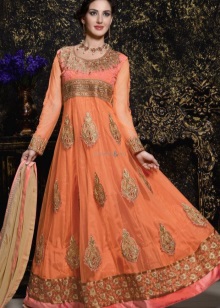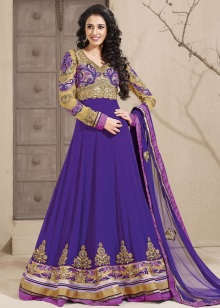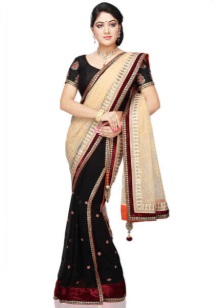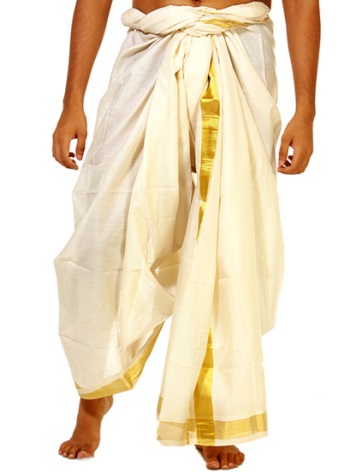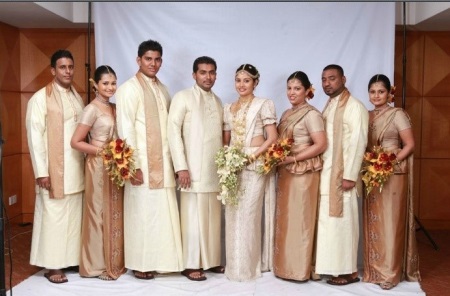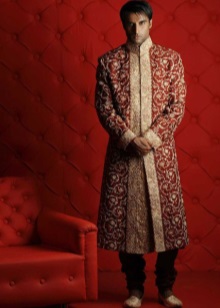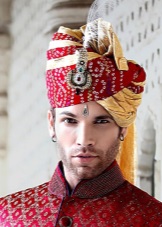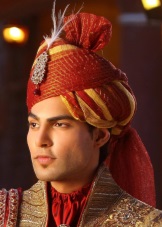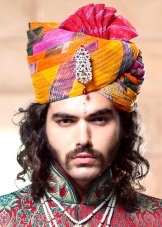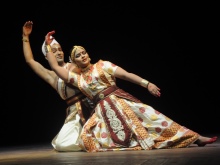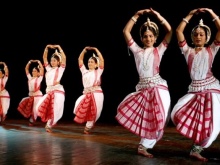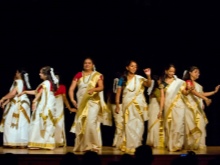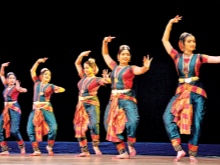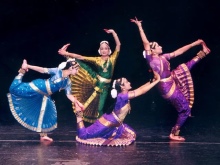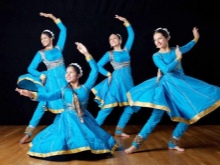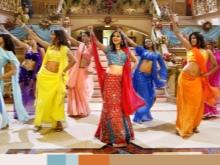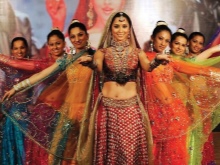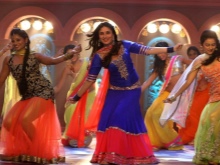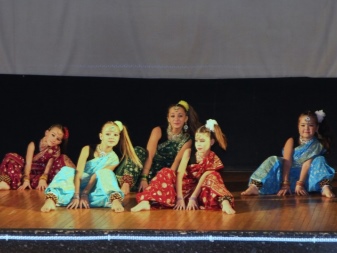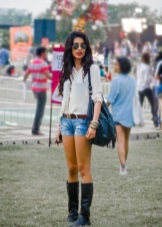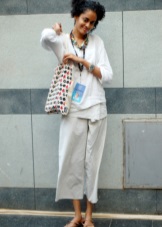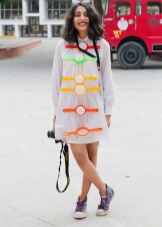National costumes of India are very diverse and vary depending on nationality, geography, climate and cultural traditions. The materials used for making clothes have a different weaving structure, fiber thickness, color and characteristic ornament. Moreover, the patterns on the fabric are very often performed using embroidery.
A bit of history
During the excavations, numerous bone needles and spinning wheels were found about five thousand years BC. Recent studies show that, perhaps, the Indians mastered the process of making and processing silk long before Chinese civilization, which is traditionally considered the pioneer of silk fabrics.
Various weaving techniques were used in ancient India, many of which have survived to this day. Silk and cotton were woven into various designs and motifs, each region developing its own special style and technique. Under the influence of the culture of ancient Persia, Indian masters began to embroider fabrics with gold and silver threads.
Dyeing clothes in ancient India was practiced as an art form. Five primary colors were identified, and complex colors were classified according to their numerous shades. Dyeing masters distinguished 5 shades of white. The mordant dyeing technique was common in India, beginning in the second millennium BC.
For the manufacture of their costumes, the Indians used another material - flax. Flax was ideally suited in its qualities and properties for the hot humid climate of India.
In the north of the country often use Kashmir shawl. It is made of fine goat wool. It perfectly warms in the cool evenings.
Indians are very fond of brocade. Kaftans are often sewn from this gold-embroidered fabric.
Women's national costume
In India, options for women's suits are extremely multifaceted, and are inextricably linked with the living conditions and traditions of each region individually. She is always incredibly beautiful, elegant and replete with a variety of ornaments, embroideries and ornaments.
Making these outfits requires special craftsmanship, so Indian tailors are highly respected by the public.
Sari
Traditional fame - sari - became world famous. A sari is a strip of ribbed cloth, from four to nine meters in length, which can be thrown over the body in a wide variety of variations. The most common style of wearing a sari is when the canvas is wrapped around the waist with one end, and the other end is covered with a shoulder, exposing the belly. Silk sarees are considered the most elegant.
For special occasions or weddings, the sari is custom tailored. The master uses exclusive colors and patterns to create a unique image. An interesting fact is that after the execution of the order all the sketches are burned. Therefore, two identical holiday sarees do not exist.
In different parts of the country, the sari has a different name. In the south of India, a snow-white sari decorated with a border of gold, which is used only in solemn occasions, is called kavanis. Mundu is called the everyday sari of light colors. In Tamil Nadu, it bears the name of the Padaway.
Sarees are usually worn with a short blouse with short sleeves and a deep neckline on the chest that opens the stomach - choli.
Mundum-Neryatkhum
The oldest variety of sarees. Worn without choli. Since it completely covers the hips, chest and abdomen of the woman, leaving the shoulders bare.
Lechenga choli
This is also a variant of the female traditional costume.It is a skirt (Lang) of various lengths, strongly flared and similar to an umbrella and choli. The length of lengi depends on the age and status of the woman.
Representatives of higher castes can afford a maximum length skirt. The festive lechenga-choli is sewn from expensive fabrics embroidered with beads and gold, and can be of various colors. Although only recently red clothes were considered solemn.
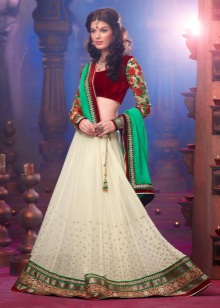
For young girls, the traditional costume consists of lengi, choli and stole, which they throw on themselves, like a sari. Upon reaching adulthood, they already prefer to wear a classic sari.
Salwar kamiz
Or shalvar-kamiz - another type of national women's attire, most common in the north-western parts of the country (Punjab region). It is very popular among the female population, especially young girls. It consists of loose trousers (salwar) narrow at the very bottom at the ankles, and a tunic (kamiz), flared to the bottom and having cuts on the sides. Shalvara beautifully drape into many folds.
Very often, women wear a veil covering their heads with salwar kamiz. It is called dupatta. In antiquity, only Indian women of the highest castes could afford to wear dupatta. Now she is available to all and is an integral part of the festive costume. Dupatta sew chiffon, brocade, silk, cotton - it depends on the style of salvar-kamiza.
Salvar-kamiz most popular among Bollywood stars.
Pattu pawdai
This dress is for a little Indian girl. The traditional children's costume is made of silk. This is a tunic that falls almost to the toes. The most popular pawad among the population of South India. During important ceremonies, children dress up in this costume.
Churidar kurt
It is a type of shalvar kamiz. In this case, the pants (churidar) are tapered and very tightly fit the leg just below the knee. These pants are perfectly combined with an elongated tunic (Kurt). Unlike kamiza, a loose cut kurt, shorter with a rounded hem.
Anarkali
Luxurious light flare dress. Anarkali always has a high waist and a sufficient length so that it can be worn separately, not combining with pants. That is what attracted European women. Who love to recently use outfits in Indian style. Anarkali perfectly hides the flaws of any shape.
Mekhela Chador
An outfit characteristic of Assamese women.
This complex type of costume consists of three parts:
- The lower part is called mekkhela. This is a fairly wide section of fabric, which is folded, forming many folds on the right side, and dips their belt. Despite the presence of ribbons on the fabric, they are not tied.
- The second part of the costume is the chador. This is a fabric that has folds of triangular shape, of very long length. She closes the torso of a woman from above.
- And the last part is the ich. Put on the last over the chador.
This costume is not suitable for everyday wear, it is used in special situations, at important celebrations.
Men's national costume
Men's national clothing, as well as women's, is unique and original, but it is not without comfort and elegance. No holiday or celebration is possible without clothing in traditional costume.
- Dhoti is a long, up to 6 meters cotton cloth of a light, most often white shade. This fabric is wrapped around the hips, so that the ends are passed between the legs and tied in a knot at the waist.Attached such a design to the belt, finishing which indicates the status of the owner. Paintings and ornaments on the belt - an integral part of a wealthy Indian.
The length of the dhoti, like the lengi in women, varies according to the social status of the man. Ordinary people in rural areas wear shortened dhoti, as it is more convenient and does not interfere with work. Due to the influence of Western culture, dhoti is increasingly being supplanted by ordinary European clothing. But still an integral part of official events.
Dhoti is worn with a regular shirt or with a jacket - an elongated straight cut shirt that reaches the knees.
- Lungi - a long canvas, which is sometimes in the form of a skirt. They are wrapped around the legs and hips of a man. Lungi is very popular in the south of the country, since it is difficult to wear regular pants with high heat and humidity. A lungi allows you to hide from the heat without obstructing ventilation.
- Shervani is an elongated jacket or coat, the length of which reaches to the knees. A prerequisite for wearing is buttoning. Looks good with wide trousers shalvarami, and with narrow churidara. Ideal for tall men. Local rajas do not skimp, buying chervans, embroider them with gold, precious stones, satin. After all, nothing adds grace and staty like a luxury chervani.
- The turban is and remains the most famous headdress in the Indian national costume. How many provinces in India, so many variations of a turban can be found traveling around the country. It is already forgotten the original purpose of the turban to save the head from overheating on a hot afternoon. But the wet cloth, tightly coiled around the head, almost all day was cooled, giving freshness.
Now the turban is an indicator of the status of the owner, his religiosity. There are different types of this headdress. The most famous model is Mysore Peta, without whom the Indian Raja costume did not do.
An additional element of the men's suit representative of the highest caste was the cord, which the Indians considered sacred. It was necessary to wear it over clothes, having girded itself across the chest and back.
Indian dance costumes
Indian dance, like the Indian costume, is unique and unique. There are a lot of styles and trends in it, so dance costumes are also a great many. Usually, classical Indian dances, kathak and pop dances are danced in saris. For the Bharatanatyam style, the famous dancer Rukmini Devi Arundale modified the sari, giving it the image of a wide “pajamas”. The golden border framing the edges of dress elements has become an obligatory element of this costume.
Classical dance Mohiniatta is distinguished by its melodiousness, grace and beauty, and therefore the costumes of dancers are always performed in white colors with gold trim. A gold apron, worn over a snow-white skirt, lends charm to the dance. This dance was created as the dance of the priestesses of the temple, so the costumes reflect this idea.
If the dance is not classical, but stylized for it, then both Indian and modern music can be used. Therefore, such a dance allows the use of salwar kamiz, lechenga-choli and other combinations of traditional clothing.
The Bollywood dance style is a very popular phenomenon in modern India. The dance attracts modern young people and girls with its vigor and mass character. Therefore, the costumes for the style of Bollywood always have the same cut, length and style, but should be different colors. And only the soloist is allowed to stand out from the crowd.
Children's costumes for dancing are usually not much different from adults, except for the length and number of decorations. As a rule, girls wear shorter skirts, and the number of bracelets is minimized for the convenience of young dancers.
The long colonization of India by Great Britain did not go unnoticed and was reflected in all spheres of Indian life.Western culture has left an indelible mark in the image of the modern Indian. Increasingly, you can find on the streets of the city European jeans or T-shirts. Children prefer modern clothing. Nevertheless, Indians highly value their culture and express their originality in every possible way, appearing at solemn receptions, weddings and other significant events in traditional men's and women's national costumes.
Conversely, trying to diversify their wardrobe and bring in elements of oriental flavor, European women constantly use elements in Indian style in their images.
